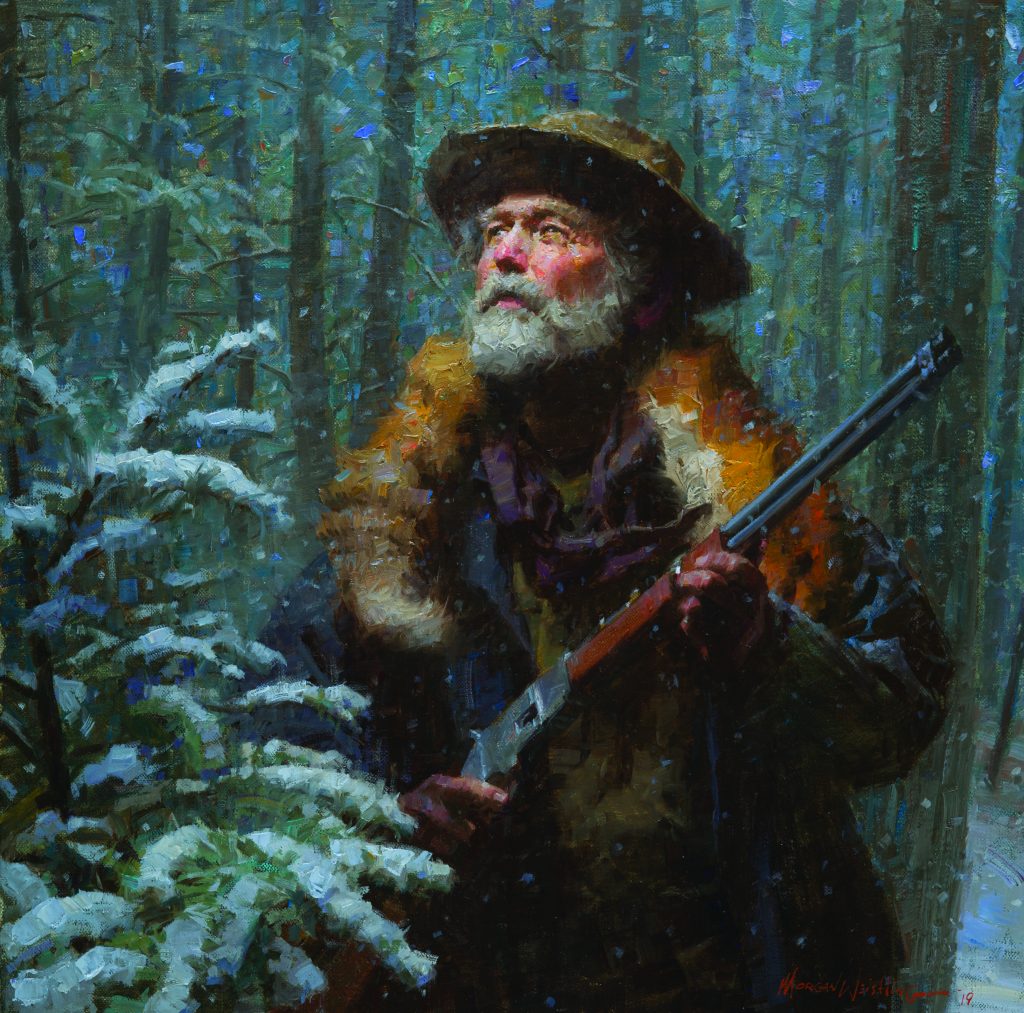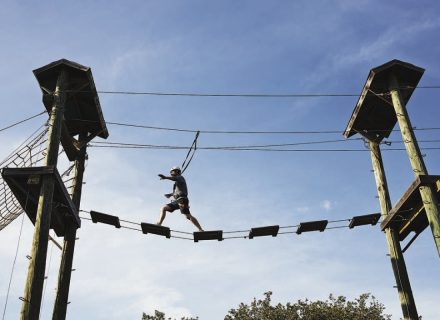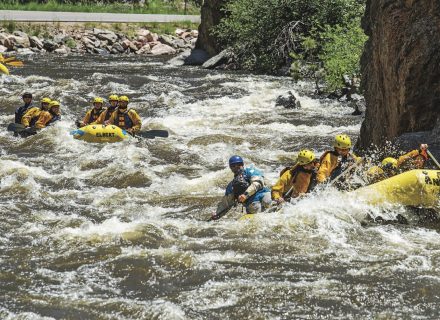He dreamed of becoming a comic-strip artist. Then Pearl Harbor happened. Howard Weistling was on a bombing mission over Europe during World War II when his plane was shot down. Facing near-starvation in a German prisoner of war camp, the captured artist found an escape by creating a comic strip. Simply titled A Western, it was drawn on the white inside of cigarette packages, the thin pages bound and preserved between a pair of flattened tin cans. Every new addition was passed around the camp, providing priceless entertainment to his fellow POWs. Then one day, the German guards vanished, Russian soldiers appeared, and Weistling was free. But the collection of comic strips was somehow left behind.
As a young boy growing up in Los Angeles, award-winning Western artist Morgan Weistling heard those stories while learning to draw sitting on his heroic father’s lap. After the war, Howard Weistling made his living as a gardener, but he never quit drawing. And he began teaching son Morgan as soon as the young boy could hold a pencil. “I can still remember feeling his rough whiskers on the back of my neck while we would draw together,” Morgan remembers. “He would draw whatever he saw that day and I would draw the same thing. I would copy whatever he would do. He always liked to tell stories and had wanted to be a comic-strip artist. So he taught me how to communicate through pictures.”
His mother was also an artist. While many families would discourage pursuing an uncertain art career, for young Morgan, it was expected. “My parents, when I was 12 years old, were getting on my case because I still wasn’t studying my anatomy like I was supposed to. My mom always used to tell me, ‘You can’t be a good artist unless you know your anatomy,’ ” he recalls. “And my dad had a vast treasure-trove of art books. I was just trained early to think in terms of working on my art and becoming a better artist.”
High school was a mandatory chore. But when classes let out, the 15-year-old focused on his real education, spending every afternoon at the now-defunct Brandes Art Institute in the Los Angeles area. There he was mentored by the classically trained Fred Fixler — “the greatest teacher I could ever possibly have hoped for.” The school wasn’t much to look at. “Just a little tiny storefront,” Weistling says. “But he had drawings on the wall, and I walked in there with my mom, and I said, ‘I need to learn how to do that.’ ”
He did exactly that, and at 19 was recruited by Hollywood to create movie posters. He worked at that for the next 14 years; The Lost World and Arnold Schwarzenegger’s True Lies and Last Action Hero are among his better known projects.
His father’s favorite movies were westerns. Morgan remembers the elder Weistling tearing up watching The Outlaw Josey Wales. So when the movie-poster business began preferring photographers to illustrators, Morgan decided to try his hand at fine art — Western style. His first painting was an instant success. He took it to Trailside Galleries in Scottsdale, Arizona, and was signed on the spot. “[They said,] ‘Yes! We’ll take it!’ ” Weistling remembers. “And while I was there they sold it — hadn’t even framed it yet. I thought, This might be easy.”
It turned out to be hard work creating characters, researching Western history, and balancing perfectionism with productivity. But Weistling rose to the challenge: Just a few years after selling that first painting, he became one of the youngest artists to win the Prix de West Purchase Award at the National Cowboy & Western Heritage Museum in Oklahoma City. It’s among more than a dozen top honors he has received from the Western art world, many from the Masters of the American West show at the Autry Museum of the American West in Los Angeles.
As was true with his family of origin, his own family comprises artists. His artist-wife, JoAnn Peralta, won a major Masters Award last year. The couple’s 25-year-old daughter, Brittany, is also a popular Masters artist. And 13-year-old daughter Sienna already displays the talent to perhaps someday join the family business. When the Weistlings take off on vacations, the car is always packed with plenty of art supplies for plein-air painting.

Howard Weistling died in 2002, but his influence is alive and well. Morgan’s Western paintings feature recurring characters and connected story lines that, while not always apparent to viewers, are well-thought-out and researched. In some ways, they’re almost like the panels of a Western comic strip — like the one his dad made in that POW camp. It’s a long story, Morgan says, but that early art miraculously reappeared 75 years later and has been returned to the family, in pristine condition. “It’s incredible,” he marvels. “I wish [my dad] could have lived to know that this is back in the family’s hands.”
Morgan usually keeps the precious keepsake locked in a safe deposit box. On the rare occasions he shows it, he remarks on the inspiration of the West: “Western stories — [that’s] why I’m in this world of Western art, telling the same kinds of stories. So it’s come full circle.”
Morgan Weistling is represented by Trailside Galleries in Jackson, Wyoming, where he will have an exhibition September 7 – 19. You can also find his paintings at Prix de West, June 12 – August 2, at the National Cowboy & Western Heritage Museum in Oklahoma City.
Images courtesy the artist
From our May/June 2020 issue.



















